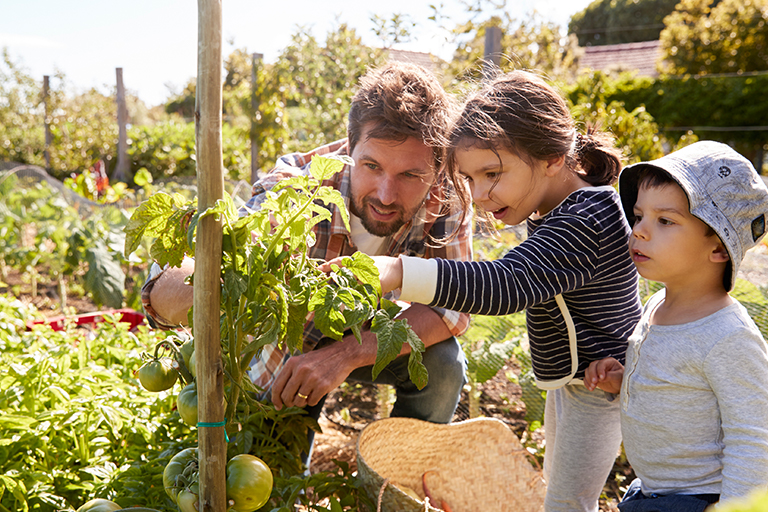By Vicki Spencer, Master Gardener
In the ’70s, I planted my first vegetable garden when a group of neighbors in northwestern Denver launched Mayor Frederico Peña’s Community Garden Program. Since none of us had large yards, we asked the Old Ladies Home if we could use their undeveloped land. After learning it was farmed without chemicals for decades, we committed to continuing the tradition. The organic gardening concepts and techniques we followed 45 years ago are still relevant today.
We were blessed with a sunny location and good, rich soil. Soil is important for anchoring plants, allowing roots to breathe and providing nutrients and water. Soil composition can facilitate or hinder these functions. In Colorado, many homeowners struggle with heavy clay soils comprised of fine particles with little space in between. As the clay absorbs water, it forms a dense, firm surface that is hard for roots to penetrate. This is why you hear so much about soil amendment. When you add organic matter, microorganisms will decompose it and produce materials that bind the soil particles into aggregates, thereby allowing roots to penetrate more easily and permitting water and air to move more freely.
Since soil nurtures plant growth, the more you know about your soil, the less you need to rely on chemicals. As a general rule, most plants will do well in soil that is 45 percent minerals, 25 percent water, 25 percent air and 5 percent organic matter. A soil test from Colorado State University Extension will identify your soil composition and nutrients that need a boost. The test results can guide decisions about watering and fertilizing throughout the summer and fall.
Avoid overwatering your garden, as it makes plants more vulnerable to pests and diseases, and target fertilizer choices to meet your needs. If you amend soil with organic matter from your yard, it benefits both the environment and your pocketbook, but decomposition takes time. For faster results while avoiding chemicals, purchase fertilizer manufactured from organic compounds.
Select disease resistant plant varieties. Typically, this information is provided on the tags you find when purchasing seeds or transplants. Check the stems and under leaves and turn pots over to look at roots to be sure they are healthy and pest-free. Some symptoms to look for are spots or dead areas on leaves and stems, abnormal growth or coloration and wilting.
Similarly, you should be vigilant in examining existing garden plants for signs and symptoms of disease and pests. Early blight (Alternaria leaf spot), for example, is a fungus that commonly attacks tomato plants during hot summer months. It produces brown or black spots on leaves, which may then turn yellow and drop off. If the fungus becomes severe, it will also attack the stems and fruit. The best nonchemical control method is to remove all diseased plant tissue from the ground and plant your tomatoes in a different location every year. Space tomato plants far enough apart for air circulation and avoid overhead watering. If the blight infestation is heavy, you can dust with sulfur to protect new leaves.
Symptoms of insect damage may include discoloration or distortion of leaves, blossoms or twigs, as well as chewing damage, cracked bark and dieback of plant parts. For example, if you see chewed leaves on your rose bushes, they might be infested with Japanese beetles. White, brown or red spots on leaves might be a sign that piercing-sucking insects are present, such as aphids or scale insects. A large hole in fruit could be an indicator that a piercing insect laid eggs inside, and the hatch created the hole while exiting.
Like diseases, many pests can be eliminated with natural remedies. In early stages, aphids can be removed simply by picking off leaves or branches, spraying with a garden hose or with kitchen soap mixed with water. You can also control aphids by attracting birds, such as wrens, chickadees and titmice, to your garden. Plant hydrangeas, dense foliage shrubs or evergreens like boxwoods where birds can hide from predators.
Being familiar with signs and symptoms of common pests and diseases comes with experience. Once your prized rose bush wilts from black spot disease, your tomato plant’s leaves yellow and drop from early blight or you find your ripe tomatoes half eaten by hornworms, you will not forget. For help identifying signs and symptoms, diagnosing problems and selecting natural remedies, contact your local extension agent or garden center.
Gardener Vicki Spencer has an eclectic background in conservation, water, natural resources and more.

